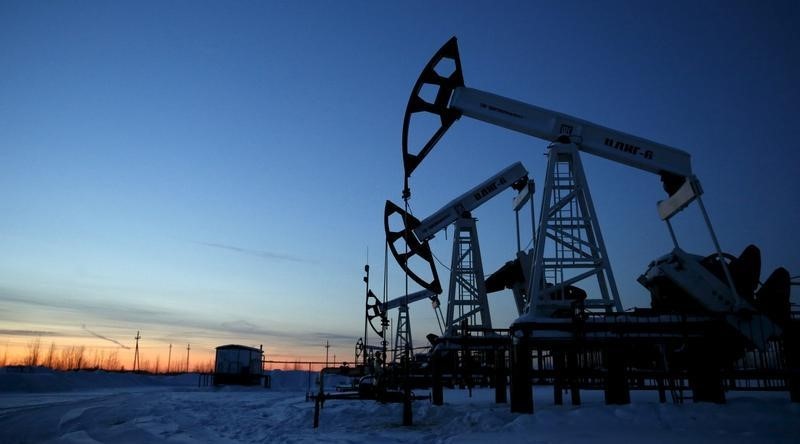By Barani Krishnan
NEW YORK (Reuters) - U.S. crude prices fell 2 percent on Wednesday after stockpiles at the main U.S. delivery point hit record highs, while Brent rose for the first time in five days after Russia suggested oil producers cut output by a million barrels each.
Inventories at the Cushing, Oklahoma delivery point for U.S. crude futures rose to an all-time high just shy of 65 million barrels, data from the government's Energy Information Administration (EIA) showed.
The Cushing build eclipsed a more bullish number from the EIA showing total U.S. crude stockpiles down for the first time in three weeks. Traders also cited refinery outages which had caused Cushing stocks to swell, and expressed worry that crude processing could slow further from scheduled maintenance works.
"Since we are going into refinery maintenance season, and coupled with Iranian oil coming into the market, any rally will be short-lived," said Tariq Zahir, crude trader and fund manager at Tyche Capital Advisors in Long Island, New York.
U.S. crude settled down 49 cents, or 1.8 percent, at $27.45 a barrel. It rallied more than $1 earlier before falling to near 12-year lows on the EIA data, and was choppy through the session due to a weak euro and firm equity markets. [FRX/] (N)
U.K.-based Brent closed up 52 cents, or 1.7 percent, at $30.84 a barrel. It was Brent's first rise since Feb. 2 and came after an 8 percent drop in the previous session.
Brent was up early after Russian oil tsar Igor Sechin proposed that producing countries cut output by 1 million barrels per day. Talk that Iran was ready to negotiate with Saudi Arabia on price support also boosted Brent.
The EIA said U.S. crude inventories fell by 754,000 barrels last week due to lower imports. Analysts had expected a rise of 3.6 million barrels. [EIA/S]
Even so, Cushing stockpiles rose by 523,000 barrels to a record 64.7 million barrels, the EIA said.
Inventories are more likely to rise than drop in coming weeks, with millions of barrels of additional crude pending delivery in the United States.

"The volume of crude still waiting to offload is still over 20 million barrels - double the volume we normally see - which could impact the number in the coming week," said Matt Smith, who tracks oil cargo data for New York-based Clipperdata. "This means we will see a humongous crude build in the weeks to come."